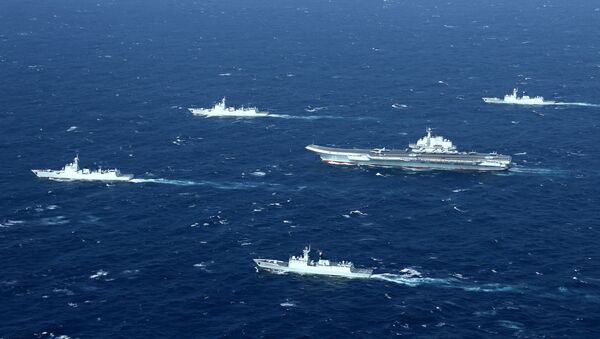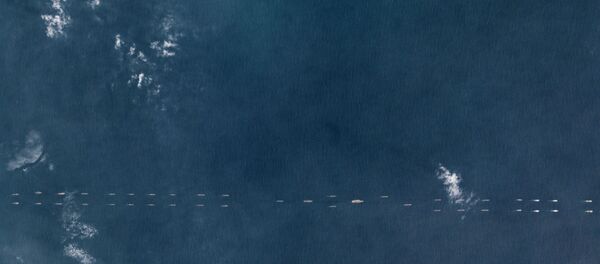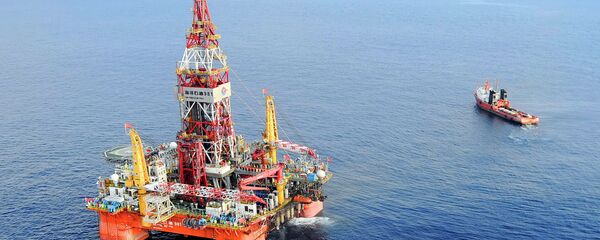"China has deployed military jamming equipment to its Spratly Island outposts," a US Defense Department official told the Wall Street Journal on Monday.
In addition to developing long-term defense infrastructure in the region, which trillions of dollars of goods transit annually, last week Chinese military forces started large-scale exercises in the South China Sea.
"There's some speculation as to the motive of the drills in the South China Sea, some attribute them to the trade war," Collin Koh, a research fellow in maritime security at Nanyang Technological University in Singapore, told Sputnik News on April 9.
"I think one of the very interesting observations is that the scale of the more recent navy drills that we've seen, with around 40-something vessels, these boats don't just come from the East Sea, which is basically responsible [for the] South China Sea. What we are seeing here is basically a combination of fleets from the north and the south — in terms of the scale it's pretty unusual, I would say," the maritime security specialist observed.
Notably, the expert said China was trying to "send a message" to anyone who may seek to meddle in the South China Sea, "so it's not just to the US but also in relation to more recent statements made by other interested powers — like those in Europe, for example."
Beijing has maintained that its military buildup across the South China Sea is strictly for defensive measures. However, Chinese outposts in the South China Sea are strategically placed near shipping lanes, US officials have noted.
"China's built up reclaimed islands in the South China Sea in the past year, with aircraft hangars, military barracks and extended runways, to the point where China has seven operational bases in the busy international shipping waterway," US Navy Admiral Harry Harris said in February.
China is "attempting to assert de facto sovereignty over disputed maritime features by further militarizing its man-made bases," Harris noted. The key maritime region is the host of multiple competing ownership claims over fishing waters, oil fields, islets and reefs by Taiwan, Vietnam, the Philippines, Brunei, Malaysia and Indonesia.




